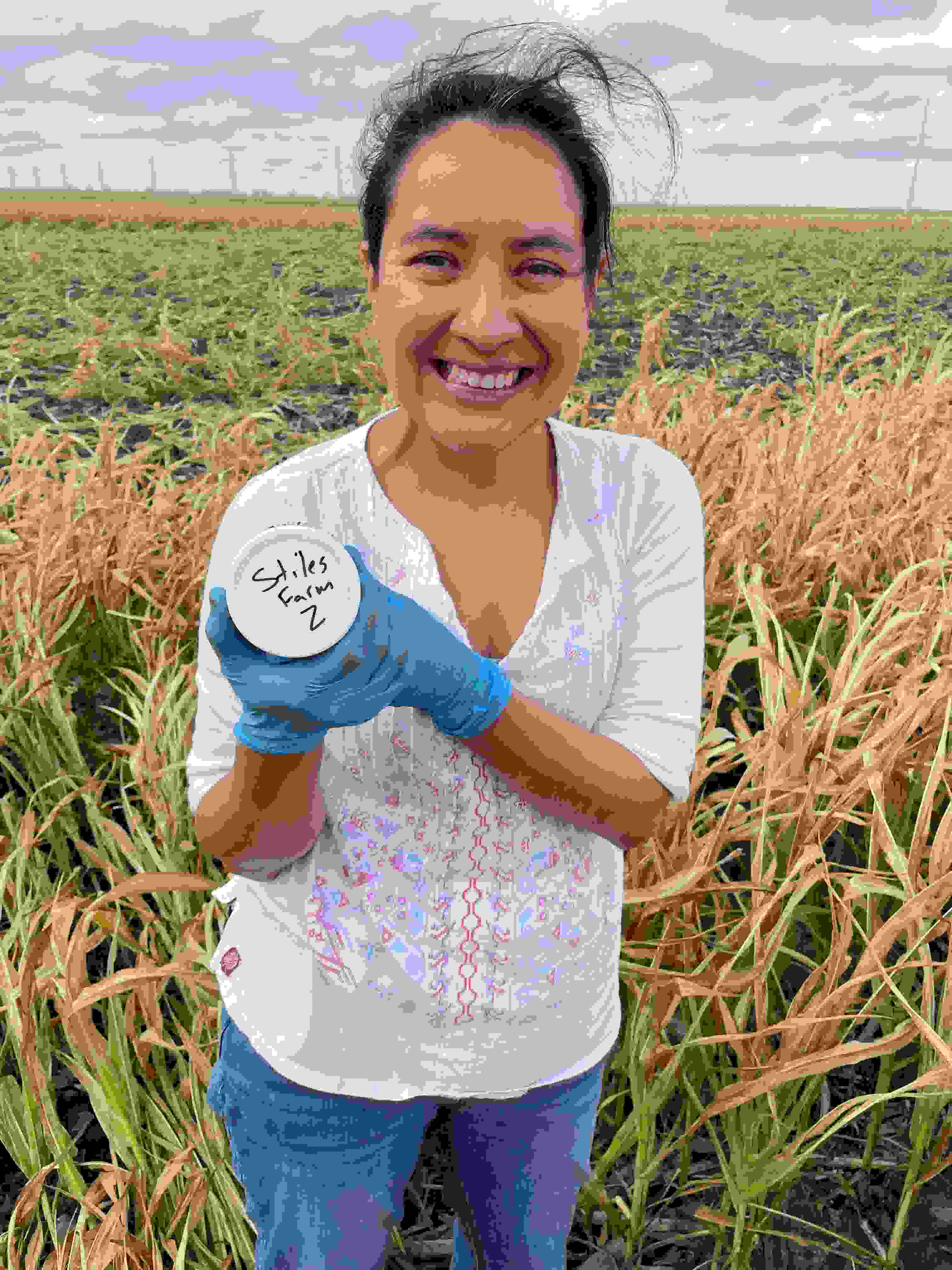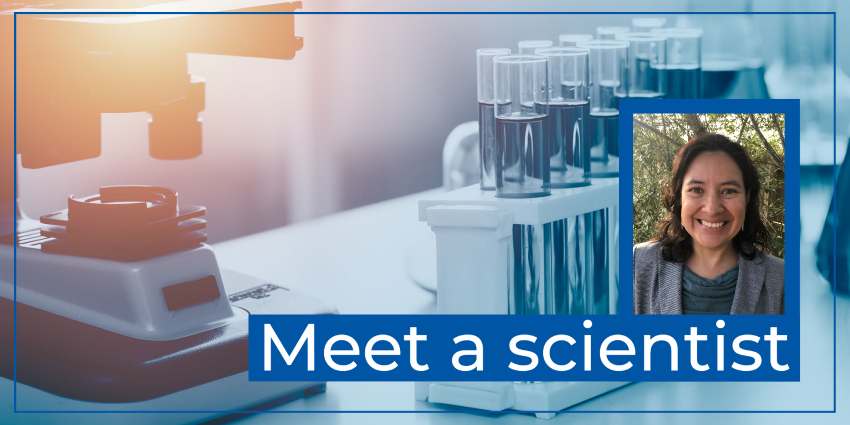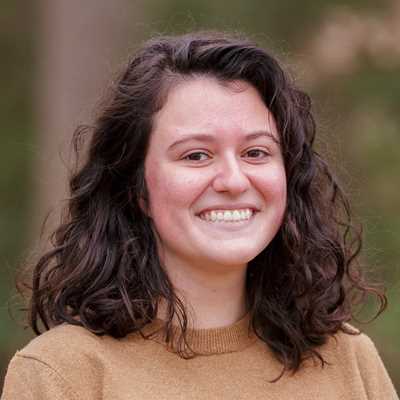Growing up in Mexico City, one of the largest cities in the world, Itza Mendoza-Sanchez, Ph.D., was always conscious of the city’s water supply problems. This sparked an interest in water infrastructure that has evolved over her years of study and research, eventually bringing her to Texas A&M University and the School of Public Health, where she researches the connection between the environment and human health.
While her study focus has evolved over the years, Mendoza-Sanchez is able to see how each step of her academic career connects back to her original interests.
“I came to Texas A&M to do my master’s degree in water resources because I was interested mainly in the quantity of water,” she said. “But when I was studying here, everything clicked that water quality is linked to water quantity.”

Mendoza-Sanchez working in the lab at Texas A&M.
Gaining new perspectives
Mendoza-Sanchez started her academic career at the Instituto Politécnico Nacional in Mexico, obtaining a degree in civil engineering. Wanting to continue her education, she came to Texas A&M to pursue her master’s and then eventually her Ph.D. in civil engineering, focusing on environmental engineering.
During seminars in her master’s program, she learned about bacteria in the environment that adapted to toxic chemicals and could degrade them. Previously unknown to her, those seminars made her even more interested in the environmental side of water.
“I thought, well, it will be more interesting to study environmental engineering, and now that I had the water quantity coursework, I was more interested in water quality research,” Mendoza-Sanchez said.
When starting her Ph.D., she was drawn to lab work, but her advisor suggested she try mathematical modeling before jumping into lab work, with the goal of eventually combining them.
“I ended up working most of the Ph.D. in mathematical modeling,” Mendoza-Sanchez said. “I worked on both, but I spent more time in the mathematical part.”
Texas A&M also provided her with a bit of culture shock. Arriving in 2000, Mendoza-Sanchez went from a city of 12 million to one of just under 69,000.
“When I arrived, I thought, well I could just take a taxi, or bus, or subway from the airport to my house, right,” Mendoza-Sanchez said. “There was only one taxi and the taxi decided if they wanted to pick you up or not.”
After graduation, Mendoza-Sanchez went on to do post-doctoral research at Michigan State and Texas A&M, allowing her to further network with other scientists and expand her interests.
“I felt free to work in different areas or to expand on what I was working on,” she said.
After also working at Tufts University and returning to her alma mater, Instituto Politécnico Nacional, Mendoza-Sanchez eventually returned to Texas A&M in 2016.
“Coming back to Texas A&M opened a lot of doors for me because of having connections already,” she said. “Having those connections in engineering and science is very important for my research.”
Mendoza-Sanchez also likes the diverse interactions she’s able to have between students from different backgrounds and the different perspectives they're able to bring.
“I have students from public health, water management and hydrological science, geology, civil engineering, biology,” she said. “But they’re also coming from different places and perspectives: Africa, Myanmar, male, female. I think having that diversity of people in science is very important.”
Making connections
Mendoza-Sanchez’s research aims to connect the environment and human health, focusing on environmental issues. She studies the use of treated wastewater for agricultural irrigation, how to make that water safe for use, and how to avoid the accumulation of emerging contaminants such as antibiotics in agricultural soils.
“We have to recycle, and we have to reuse, but a lot of the regular wastewater treatment plants do not treat that water for new chemicals we use,” she said. “So, I identified antibiotics as a special type of contaminant.”
One major challenge that comes with antibiotics possibly being in water supplies is the risk of enhancing antibiotic resistance in bacteria. Those genes could be transferred to different bacteria and pathogens, Mendoza-Sanchez explained.
“I am working at connecting two sides of the story, one side is what’s happening in the environment. If we use the water and have these residuals of antibiotics, are we affecting the environment and it is going to be more risky?” she said. “The other side is, what are the trends of antibiotic-resistant infections in humans? Are we actually seeing an increase of those infections and where?”
Mendoza-Sanchez was named a TWRI Faculty Fellow in 2021 for her proposal studying how antibiotics would be transported through the soil when using treated wastewater. She took a particular interest in the El Paso area since they are already using treated wastewater in parks and other sites.
“They’re already working on how the use of treated wastewater could affect plant growth,” she said. “It is great to be able to collaborate with them and synergize our research.”

Mendoza-Sanchez out in the field.
Teaching the next generation of environmental scientists
At Texas A&M, Mendoza-Sanchez teaches public health courses and advises master’s and Ph.D. students both in public health and in the Water Management and Hydrological Sciences program.
She said her best advice for students is to work on what they love.
“That will give you better tools to be prepared for whatever comes,” she said. “You study things that you think are not connected, but because you like them, you work on them and at some point, they will go together.”


